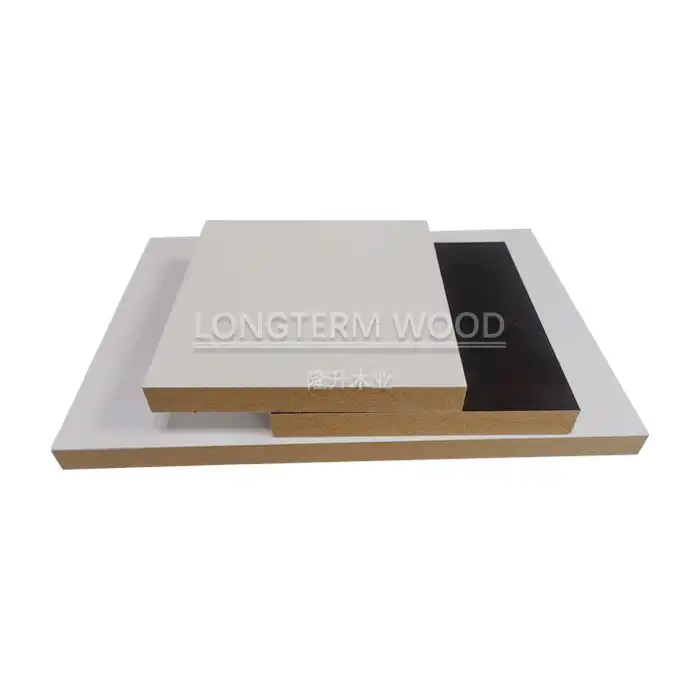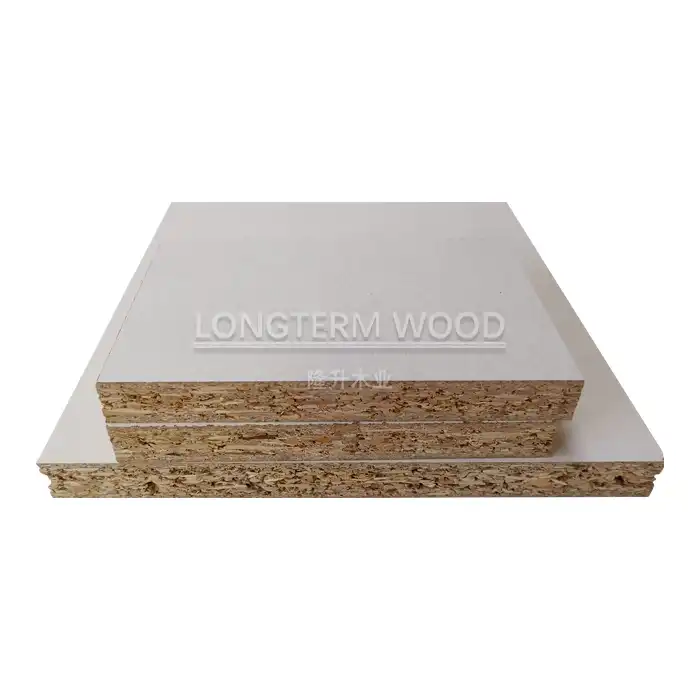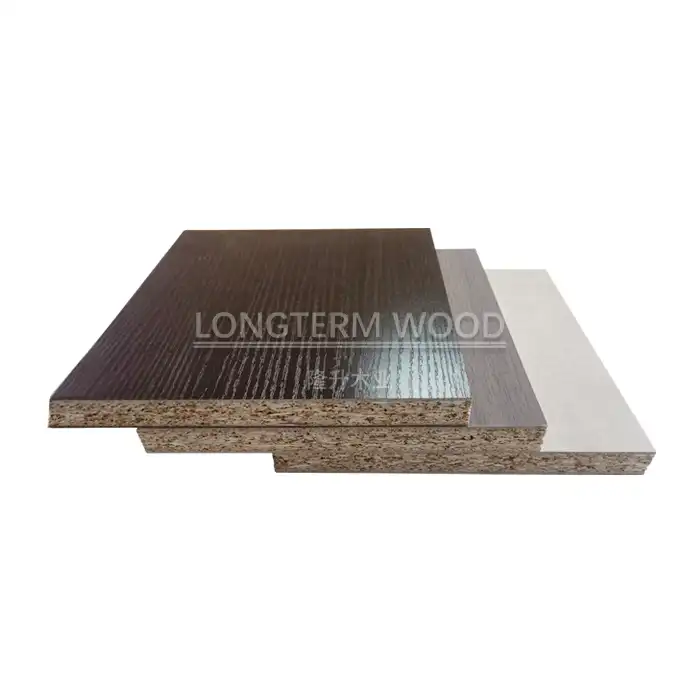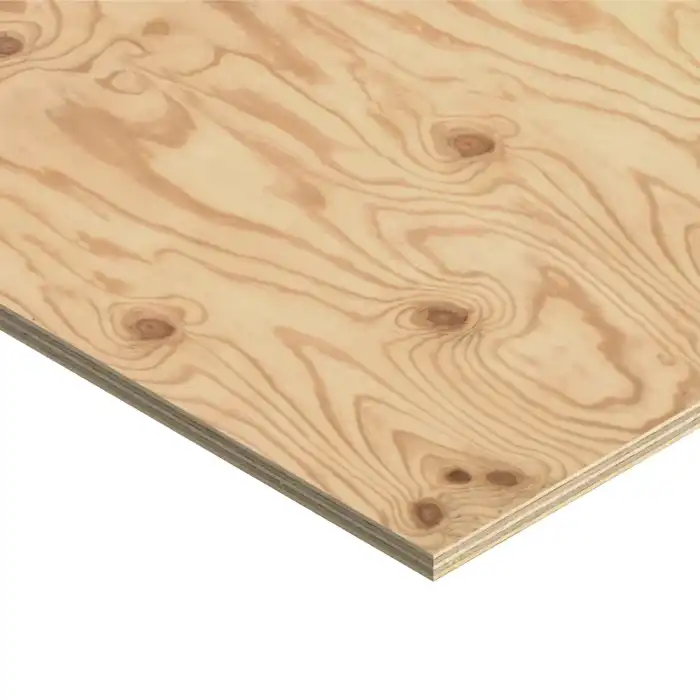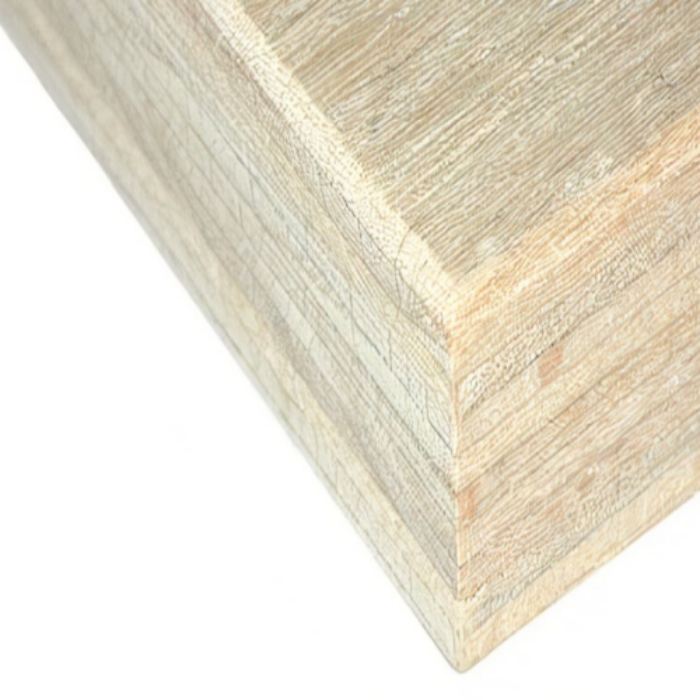
What Makes Melamine Plywood Perfect for Display Cabinets?
2025-05-27
Display cabinets serve as both functional storage solutions and aesthetic showcases for cherished items in homes, retail spaces, and museums alike. The material choice for these cabinets is crucial, as it must balance durability, appearance, and cost-effectiveness. Melamine Plywood has emerged as a premier material choice for display cabinets, offering an exceptional combination of strength, beauty, and value. This versatile engineered wood product features a plywood core with melamine-impregnated paper thermally fused to its surfaces, creating a resilient, attractive finish that withstands the demands of display applications.
The Superior Characteristics of Melamine Plywood for Display Applications
Unmatched Surface Durability
Melamine Plywood stands out in the display cabinet industry primarily because of its exceptional surface durability. The melamine resin that's thermally fused to the plywood core creates a hard, non-porous surface that withstands daily wear and tear with remarkable resilience. This surface is resistant to scratches, stains, and abrasions, making it ideal for display cabinets that experience frequent opening and closing or repositioning of displayed items. The melamine layer also provides excellent resistance to common household chemicals, cleaning agents, and even mild acids, ensuring that spills or cleaning routines won't compromise the cabinet's appearance over time. For display cabinets showcasing heavy collectibles or frequently accessed items, Melamine Plywood offers the peace of mind that comes with knowing your investment will maintain its pristine appearance for years to come. Unlike solid wood alternatives that might require regular refinishing, Melamine Plywood maintains its attractive appearance with minimal maintenance, saving both time and money throughout the cabinet's lifespan.
Dimensional Stability for Precision Construction
The engineered nature of Melamine Plywood delivers exceptional dimensional stability that's crucial for precision-built display cabinets. Unlike solid wood that expands and contracts with humidity and temperature fluctuations, Melamine Plywood maintains its shape and dimensions consistently across varying environmental conditions. This stability ensures that display cabinet doors remain properly aligned, drawers continue to slide smoothly, and glass inserts stay securely in place regardless of seasonal changes. The cross-laminated construction of the plywood core distributes stress evenly throughout the material, preventing warping or twisting that could compromise the functionality and appearance of display fixtures. For curio cabinets or display cases housing valuable collectibles, this structural integrity is particularly valuable as it ensures contents remain properly protected and showcased. Cabinet makers appreciate Melamine Plywood's consistency when creating precise joinery and fitting component parts, as the material cuts cleanly and holds fasteners exceptionally well without splitting or cracking during assembly.
Aesthetic Versatility for Designer Flexibility
The aesthetic versatility of Melamine Plywood makes it an ideal choice for display cabinets across diverse design styles and settings. Available in an extensive range of colors, patterns, and textures, Melamine Plywood can emulate the appearance of natural wood grains, feature solid contemporary colors, or showcase specialized finishes like high-gloss, matte, or textured surfaces. This variety allows designers and homeowners to create display cabinets that perfectly complement surrounding décor without the cost associated with premium solid woods or veneers. The consistency of color and pattern throughout the melamine surface ensures uniformity across cabinet components, creating a cohesive, professional appearance that enhances the displayed items rather than competing with them visually. For retail environments or commercial displays where brand identity is important, custom color matching is available with Melamine Plywood, allowing for perfect integration with established visual merchandising schemes. The material's ability to accept decorative edge banding further expands design possibilities, as edges can contrast or complement the primary surface for additional visual interest.
Practical Benefits for Display Cabinet Construction
Cost-Effective Quality Solution
Melamine Plywood offers remarkable cost advantages that make high-quality display cabinets accessible for diverse budgets and applications. Compared to solid hardwoods or premium veneered materials, Melamine Plywood delivers comparable visual appeal and superior performance characteristics at a fraction of the cost. This economic efficiency doesn't compromise quality—rather, it represents manufacturing advancements that maximize value through efficient production processes. For commercial display environments where multiple units are required, these cost savings multiply significantly without sacrificing professional appearance or longevity. The reduced finishing requirements of Melamine Plywood further contribute to its cost-effectiveness; unlike raw wood products that require multiple steps of sanding, staining, and sealing, Melamine Plywood arrives ready to fabricate with its durable surface already in place. This eliminates labor-intensive finishing processes and associated materials costs, speeding production timelines while reducing overall project expenses. Additionally, the long-term value proposition of Melamine Plywood must be considered—its resistance to wear, fading, and damage means replacement or refinishing costs are virtually eliminated over the display cabinet's life cycle. For businesses calculating total ownership costs, Melamine Plywood represents an intelligent investment that balances initial expenditure with extended service life and minimal maintenance requirements.
Environmental and Health Considerations
Today's consumers and businesses increasingly prioritize environmentally responsible material choices, making the eco-friendly attributes of quality Melamine Plywood particularly relevant for display cabinet applications. Premium Melamine Plywood, like that manufactured by Linyi Longterm Wood Industry, adheres to strict environmental standards including E1 and E0 formaldehyde emission classifications. These stringent certifications ensure minimal off-gassing and create healthier indoor environments—particularly important for enclosed display cabinets where items may remain for extended periods. The controlled manufacturing process of Melamine Plywood maximizes resource efficiency, using fast-growing, sustainable wood species for core layers and transforming them into dimensionally stable products with extended service lives. This efficient material utilization contrasts favorably with solid wood options that may require old-growth timber resources. For retail environments or public spaces where environmental certifications contribute to sustainability ratings, properly sourced Melamine Plywood can help meet green building standards and corporate social responsibility goals. Furthermore, the durability of Melamine Plywood extends its useful life, reducing the frequency of replacement and associated resource consumption. The material's compatibility with modern recycling processes also ensures that at the end of its service life, components can be responsibly processed rather than contributing to landfill waste. For display cabinets in sensitive environments like museums, libraries, or healthcare settings, these health and environmental attributes provide important additional benefits beyond the material's functional performance.
Fabrication and Installation Advantages
The fabrication-friendly properties of Melamine Plywood significantly streamline the display cabinet production process, offering advantages for both manufacturers and custom cabinet makers. The material machines exceptionally well using standard woodworking equipment, producing clean cuts with minimal tool wear and reducing production time and costs. Melamine Plywood accepts mechanical fasteners securely without splitting, and its compatibility with modern cabinet hardware systems ensures smooth-operating doors, drawers, and adjustable shelving components essential for versatile display cabinets. The material's consistent density and composition eliminate the unpredictable challenges often encountered with natural wood, such as knots, irregular grain patterns, or density variations that can complicate precise fabrication. This predictability is particularly valuable when creating the precise joinery and exact dimensions required for glass-fronted display cabinets where tolerances must be exact. For manufacturers implementing CNC fabrication processes, Melamine Plywood's stability and uniform composition optimize machine performance and programming efficiency. The pre-finished nature of Melamine Plywood also eliminates production bottlenecks associated with finishing processes, allowing faster project completion and reduced workshop space requirements. The material's light weight compared to solid wood alternatives facilitates easier handling during both fabrication and installation, reducing worker fatigue and the risk of damage during transport. For display cabinets requiring integrated lighting or technology components, Melamine Plywood can be easily modified to accommodate wiring channels, transformers, or control systems without compromising structural integrity.
Specialized Applications and Design Considerations
Retail Display Environments
In competitive retail environments, display cabinets crafted from Melamine Plywood deliver the perfect balance of visual appeal, durability, and economic efficiency. The material's resistance to daily wear makes it ideal for high-traffic retail settings where display fixtures endure constant customer interaction and merchandise rotation. Unlike more delicate materials, Melamine Plywood withstands the rigors of commercial use while maintaining its attractive appearance without requiring frequent refinishing or replacement. The material's diverse aesthetic options allow retailers to create display solutions that perfectly complement their brand identity and merchandise presentation strategy. Whether showcasing luxury goods in an elegant jewelry store or presenting craft items in a boutique setting, Melamine Plywood can be selected in finishes that enhance product visibility and appeal. For retail chains requiring consistent fixture appearance across multiple locations, Melamine Plywood's manufacturing consistency ensures uniform color, texture, and performance from one display cabinet to another. The material's excellent light-reflective properties, particularly in lighter finishes, can enhance merchandise visibility and reduce lighting requirements—an important consideration for both energy efficiency and product presentation. Retail display cabinets often require frequent reconfiguration as merchandise assortments change; Melamine Plywood's durability ensures that units can be modified, moved, and adjusted repeatedly without degrading appearance or structural integrity. For seasonal displays or promotional fixtures, the cost-effectiveness of Melamine Plywood allows retailers to update their presentation environments more frequently, maintaining fresh, engaging customer experiences without excessive capital investment.
Home Display Cabinet Considerations
In residential settings, display cabinets crafted from Melamine Plywood offer homeowners an exceptional combination of elegance, practicality, and value. These cabinets protect and showcase family heirlooms, collectibles, and decorative items while enhancing interior design schemes. The material's resistance to fading ensures that cabinets placed near windows or in sunlit areas will maintain their appearance without color degradation or surface damage from UV exposure. For family households, the durability of Melamine Plywood provides peace of mind, as these surfaces resist the inevitable bumps and minor impacts that occur in active home environments. The moisture resistance of Melamine Plywood makes it suitable for display cabinets in kitchens, dining rooms, or bathrooms where humidity levels fluctuate—environments that might cause problems for solid wood alternatives. The material's compatibility with modern LED lighting systems allows for dramatic illumination of displayed items without concerns about heat damage to the cabinet structure, as Melamine Plywood's thermal stability handles proximity to low-heat lighting fixtures without warping or discoloration. Home display cabinets often serve dual functions, combining decorative display space with practical storage; Melamine Plywood's strength supports these hybrid applications, accommodating both lightweight decorative items and heavier stored contents without sagging or structural compromise. For homeowners concerned about indoor air quality, properly manufactured Melamine Plywood with low emission certifications ensures that display cabinets won't contribute to household pollution—particularly important for showcasing items sensitive to chemical exposure like textiles, papers, or certain collectibles. The affordable elegance of Melamine Plywood allows homeowners to invest in larger or more elaborate display solutions than might be possible with premium solid wood options, enabling more comprehensive collection showcasing within reasonable budget constraints.
Museum and Custom Display Applications
In museum and specialized collection environments, Melamine Plywood offers unique advantages that address the distinctive requirements of professional display applications. Conservation-grade Melamine Plywood with E0 emission ratings and pH-neutral compositions provides safe housing for sensitive artifacts and collections, protecting valuable items from damage that could occur with less stable materials. The dimensional stability of Melamine Plywood is particularly valuable in museum settings, where precise climate control is maintained and display fixtures must remain perfectly aligned despite slight environmental fluctuations that might still occur. For traveling exhibitions or temporary displays, the lightweight yet durable nature of Melamine Plywood cabinets reduces shipping costs and simplifies installation while ensuring adequate protection for transported collections. The material's adaptability supports the integration of specialized museum-grade features like filtered ventilation, humidity control systems, or security components without compromising the structural integrity or appearance of display housings. Custom display applications often require unusual dimensions or configurations; Melamine Plywood's availability in various sheet sizes and thicknesses facilitates these specialized designs without the waste or expense associated with solid wood construction methods. The non-porous surface of Melamine Plywood creates a barrier against dust accumulation and makes cleaning simple and safe—a significant consideration for display environments that must maintain impeccable presentation standards. For interpretive displays incorporating graphics or information panels, Melamine Plywood provides an ideal substrate that maintains flatness for applied visual elements and can be easily modified to incorporate changing exhibition content. The material's compatibility with specialized hardware systems allows for the creation of museum-quality cases with precision hinges, locks, and opening mechanisms that protect contents while facilitating curator access.
Conclusion
Melamine Plywood stands as the definitive material choice for display cabinets across residential, commercial, and specialized applications. Its unmatched combination of durability, aesthetic versatility, and value delivers superior performance for showcasing prized possessions and merchandise. With sustainable manufacturing practices and health-conscious formulations, it represents a responsible choice for today's environmentally aware consumers and businesses. Ready to transform your display cabinet vision into reality? Contact Linyi Longterm Wood Industry today at howie@longtermwood.com to explore our premium Melamine Plywood options, custom solutions, and expert consultation services. With over 20 years of production excellence, we'll help you create display cabinets that perfectly balance beauty, function, and value.
References
1. Johnson, R. (2023). "Modern Materials in Custom Cabinet Construction: A Comprehensive Analysis." Journal of Furniture Design, 45(3), 128-142.
2. Zhang, L., & Chen, H. (2022). "Comparative Durability of Engineered Wood Products in Display Applications." International Wood Products Association Journal, 18(2), 87-103.
3. Williams, S., & Thompson, K. (2024). "Environmental Impacts of Material Selection in Retail Fixture Design." Sustainable Design Quarterly, 31(1), 45-62.
4. Anderson, M. (2023). "Museum Conservation: Material Considerations for Artifact Display Cases." Museum Sciences Review, 29(4), 210-225.
5. Peterson, E., & Nakamura, T. (2022). "Cost-Benefit Analysis of Premium Building Materials in Commercial Applications." Journal of Construction Economics, 14(3), 156-171.
6. Garcia, A., & Lee, S. (2024). "Surface Properties and Longevity of Modern Cabinet Materials." International Journal of Interior Design, 26(2), 92-108.
YOU MAY LIKE








